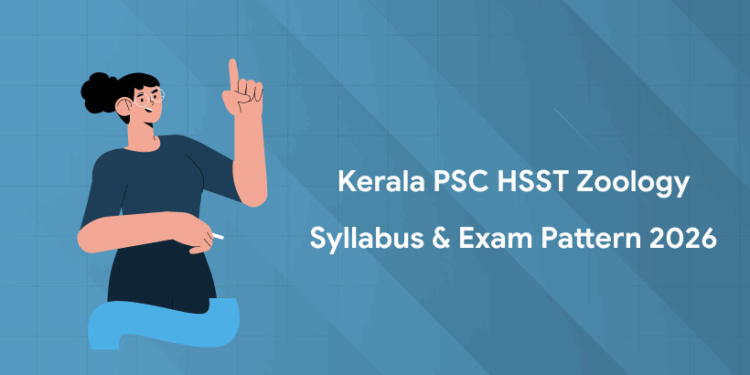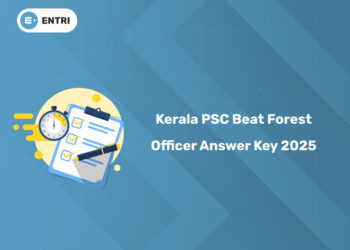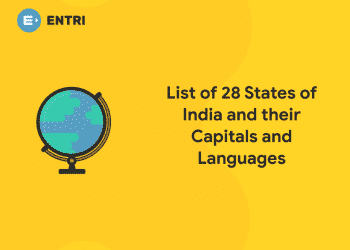Table of Contents
Prepare for the Kerala PSC HSST Zoology Exam 2026 with our complete guide! Get the detailed syllabus, PDF download, and exam pattern. Covering Systematics, Physiology, Biochemistry, Microbiology, Genetics, Ecology, and more, this post helps you plan your preparation effectively. Stay ahead with expert tips and insights for HSST Zoology Syllabus and Exam Pattern 2026.
Kerala PSC HSST Zoology Exam 2026 Highlights
| Kerala PSC HSST Zoology Exam 2026 | |
| Job Type | Government Job |
| Post Name | Higher Secondary School Teacher |
| Category Number | Notify Later |
| Subject | Zoology |
| Notification Release Date | Notify Later |
| Exam Date | Notify Later |
| Admit Card | Notify Later |
| Last Date to Apply | Notify Later |
| Official Website | www.keralapsc.gov.in |
HSST Zoology 2026 Previous Question Paper PDF Download
1: The first recipient of the ‘Rajiv Gandhi Khel Ratna’ award?
| Exam | |
| 058/2022 | |
| 051/2018 |
Enroll in Kerala's Top-rated HSA Coaching Program!
സർക്കാർ ജോലി എന്ന സ്വപ്നം ഇനി സ്വപ്നം മാത്രമല്ല! Join Entri's HSA Coaching Program
Join Now!Kerala PSC HSST Zoology Syllabus 2026 PDF
The complete Kerala PSC HSST Zoology syllabus 2026 PDF covering all modules—Systematics, Evolution, Physiology, Biochemistry, Microbiology, Genetics, Ecology, Biotechnology, and Current Affairs. Click below to download the official syllabus PDF and start your preparation with a structured plan.
Kerala PSC HSST Zoology Exam Pattern 2026
Below is a detailed table of marks distribution, modules, and sections for the Kerala PSC HSST Zoology 2026 exam. Use this table to plan your study strategy, focus on high-weightage topics.
| Module / Section | Topics Covered | Marks |
|---|---|---|
| Module I | Systematics and Evolutionary Biology: Systematics concepts, trends, speciation, procedural & taxonomic keys; Evolutionary theories, macro & microevolution, molecular clock, Cytochrome C, Hemoglobin, Histone | 10 |
| Module II | Physiology & Biochemistry: Nutrition, Digestion, Circulation, Nerve, Excretory, Respiratory, Muscle, Endocrinology; Biomolecules, Enzymes, Carbohydrate, Protein & Lipid metabolism, Energy metabolism | 10 |
| Module III | Microbiology & Immunology: Microorganisms, Bacteria, Viruses, Fungi, Protozoa, Algae, Bacterial structure, culture, Industrial Microbiology; Immunity, Antigens, Antibodies, Complement system, Transplantation | 10 |
| Module IV | Cell, Molecular Biology & Biotechnology: Cell organelles, DNA/RNA, Replication, Transcription, Translation, Gene regulation; Gene cloning, Vectors, PCR, Blotting techniques, Sequencing, Transgenic animals | 10 |
| Module V | Genetics & Developmental Biology: Mendelian principles, DNA/RNA types, Genetic code, Syndromes, Gametogenesis, Fertilization, Early development, Experimental embryology | 10 |
| Module VI | Ecology, Ethology, Biodiversity Conservation, Biostatistics, Biophysics, Bioinformatics: Ecosystem, Population, Community ecology, Biodiversity, Conservation, Biostatistics, Instrumentation, Bioinformatics, Climate protocols | 10 |
| Module VII | Recent Developments in Zoology | 10 |
| Part II | Research Methodology / Teaching Aptitude: Teaching methods, learner characteristics, research steps, ethics, thesis writing | 10 |
| Part III | Indian Constitution & Social Welfare: Fundamental rights, duties, directive principles, Centre-State relations, social welfare legislation, Kerala renaissance, social reform movements, literary figures | 10 |
| Part IV | General Knowledge & Current Affairs | 10 |
Kerala PSC HSST Zoology Detailed Syllabus 2026
Please note that, in addition to the topics listed above, questions may also be drawn from other subjects included in the prescribed educational qualifications for the post. There is no guarantee that every topic mentioned above will appear in the question paper.
MODULE I: SYSTEMATICS AND EVOLUTIONARY BIOLOGY (10 Marks)
1. Systematics
-
Basic concepts, Importance, and Applications
-
Trends: Chemotaxonomy, Cytotaxonomy, Molecular Taxonomy, Cladistics, Numerical Taxonomy
-
Dimensions of Speciation, Species Concept, Theories of Biological Classification, Hierarchy of Categories
-
Procedural Keys: Taxonomic procedures – Collection, Preservation, Curating, Identification
-
Taxonomic Keys: Merits and Demerits; ICZN; Formation of Scientific Names of Various Taxa
2. Evolutionary Biology
-
Outline of evolutionary theories: Darwinism, Lamarckism, Modern Synthesis (not in detail)
-
Origin of higher categories
-
Punctuated equilibrium
-
Macroevolution, Microevolution
-
Coevolution
-
Founder principle
-
C-value paradox
-
Concept of molecular clock
-
Molecular examples: Cytochrome C, Hemoglobin, Histone
MODULE II: PHYSIOLOGY AND BIOCHEMISTRY (10 Marks)
I. Physiology
-
Nutrition and Digestion
-
Types of nutrition
-
Mechanism of digestion and absorption
-
Gastrointestinal hormones
-
Deficiency diseases of nutrients
-
-
Circulatory Physiology
-
Physiology of cardiac muscles
-
Cardiac cycle
-
Electrical properties
-
Conducting system of heart
-
Blood pressure, Blood volume, Pressure control – integrated system
-
-
Nerve Physiology
-
Nerve action potential
-
Conduction of nerve impulse
-
Synapse and synaptic transmission
-
Neurotransmitters
-
-
Excretory Physiology
-
Respiratory Physiology
-
Muscle Physiology
-
Endocrinology
-
Major endocrine glands, their hormones, and functions
-
Mechanism of hormone action
-
II. Biochemistry
-
Biomolecules
-
Carbohydrates: Classification, Structure, Properties, Functions
-
Proteins: Classification, Structure, Properties, Functions
-
Lipids: Classification, Structure, Properties, Functions
-
-
Enzymes
-
Mechanism of enzyme action
-
Factors affecting enzyme action
-
Enzyme kinetics: Michaelis-Menten kinetics
-
Substrate concentration, Enzyme inhibition and regulation
-
Isozyme, Coenzyme, Ribozymes
-
-
Metabolism
-
Carbohydrates: Glycolysis, TCA cycle, Pentose phosphate pathway, Glycogenesis, Glucogenesis, Gluconeogenesis, Regulation
-
Proteins: Deamination, Transamination
-
Lipids: β-oxidation, Fatty acid synthesis, Cholesterol biosynthesis
-
-
Energy Metabolism
-
Oxidative metabolism, Oxidative phosphorylation
-
Chemiosmotic theory
-
MODULE III: MICROBIOLOGY AND IMMUNOLOGY (10 Marks)
I. Microbiology
-
Classification of Microorganisms – Bergey’s Manual
-
Salient features of Bacteria, Viruses, Fungi, Protozoa, Algae
-
Bacterial Cell: Structure and Function
-
Bacterial Cell Wall: Peptidoglycan, Gram-positive and Gram-negative, Mechanism of Gram staining
-
Bacterial culture media
-
Growth curves
-
Industrial Microbiology: Fermentation
II. Immunology
-
Types of Immunity: Innate, Acquired, Passive, Active, Cell-mediated
-
Cells of primary and secondary lymphoid organs
-
Cells and organs of immune system
III. Immunogens (Antigens)
-
General properties: Structure, Function, Variability, Diversity
-
Factors affecting antigenicity
-
Epitopes and haptens
-
Adjuvants
IV. Immunoglobulins (Antibodies)
-
General properties: Structure and Function
-
Different classes: IgA, IgD, IgE, IgM
-
Variability and Diversity
-
Monoclonal and Polyclonal antibodies
V. Antigen-Antibody Interaction
-
Complement system: Classical pathway, Alternate pathway
-
Cell-mediated and humoral reactions
VI. Transplantation
-
MHC genes, Auto-immune diseases
MODULE IV: CELL, MOLECULAR BIOLOGY AND BIOTECHNOLOGY (10 Marks)
Cell Biology
-
Cell membrane: Structure and Function
-
Cell organelles: Special reference to Mitochondria and Ribosomes
Molecular Biology
-
Organization of eukaryotic genome: Gene content, Genomic size, Conserved exons, Recombination
-
DNA replication, Repair, Recombination (Prokaryotic & Eukaryotic)
-
Transcription and RNA processing (Prokaryotic & Eukaryotic)
-
Translation: Mechanism, Post-translational modification
-
Gene regulation in Prokaryotes and Eukaryotes
-
Transcriptional signals: TATA, CAAT box, Enhancers
Biotechnology
-
Gene Cloning
-
Major steps, Isolation, Purification
-
Vectors: Plasmids, Ti plasmid, Bacteriophages, Cosmids, Phagemids, Artificial chromosomes
-
Enzymes in gene cloning
-
Probes and molecular markers (RFLP, RAPD, AFLP)
-
Homopolymer tailing, linkers, adapters
-
-
Genetic Engineering Techniques
-
PCR, DNA fingerprinting
-
Blotting techniques: Northern, Southern, Western, Dot blot, Slot blot
-
DNA sequencing: Maxam-Gilbert, Sanger-Coulson methods
-
Chromosome jumping, Genomic & cDNA libraries
-
Site-specific mutagenesis, gene targeting
-
Human genome project, Human gene therapy
-
Transgenic animals
-
MODULE V: GENETICS AND DEVELOPMENTAL BIOLOGY (10 Marks)
I. Genetics
-
Mendelian principles: Laws, Linkage, Crossing over, Mutation
-
DNA: Types of DNA and RNA
-
Lyon hypothesis
-
Syndromes: Klinefelter, Down, Turner
-
Genetic code
II. Developmental Biology
-
Gametogenesis, Fertilization, Early development: Cleavage, Blastulation, Gastrulation, Organogeny
-
Experimental Embryology
-
Embryonic induction
MODULE VI: ECOLOGY, ETHOLOGY, BIODIVERSITY CONSERVATION AND BIOSTATISTICS (10 Marks)
1. Ecology
-
Habit and Habitat, Ecological niche, Ecosystem
-
Population and Community ecology
-
Ecological succession
-
Pollution and Global warming
2. Ethology
-
Learning behavior
-
Communication behavior
-
Motivation
3. Biodiversity Conservation
-
Biodiversity concept, Status in India, Value, Loss and causes
-
Indices, Hotspots of biodiversity
-
In situ and Ex-situ conservation
4. Biostatistics
-
Mean, Median, Mode, Standard deviation
-
Graphical representation of data
5. Biophysics, Bioinformatics, and Computer Application
-
Instrumentation: SEM, TEM, Electrophoresis (Gel, PAGE, Agarose, 2D), HPLC, Flow cytometry, NMR, Mass, Plasma, Atomic, X-ray diffraction, ELISA
-
Bioinformatics: Proteomics, Genomics, Databases (Primary & Secondary), Search engines
-
Transgenic animals, Stem cell research
-
IPR, Carbon trading, Ecological footprinting
-
Treaties and protocols related to climate change
MODULE VII: RECENT DEVELOPMENTS IN ZOOLOGY (10 Marks)
PART II: RESEARCH METHODOLOGY / TEACHING APTITUDE (10 Marks)
I. Teaching Aptitude
-
Nature, objectives, characteristics, and basic requirements of teaching
-
Learner’s characteristics
-
Factors affecting teaching
-
Methods of teaching
-
Teaching aids
-
Evaluation systems
II. Research Aptitude
-
Research: Meaning, Characteristics, Types
-
Steps and Methods of research
-
Research ethics
-
Paper, article, workshop, seminar, conference, symposium
-
Thesis writing: Characteristics and format
PART III: SALIENT FEATURES OF INDIAN CONSTITUTION (10 Marks)
-
Salient features of Constitution, Preamble, significance
-
Fundamental Rights, Directive Principles, Relation between Fundamental Rights and Directive Principles, Fundamental Duties
-
Executive, Legislature, Judiciary (Union & State)
-
Other constitutional authorities
-
Centre-State relations: Legislative, Administrative, Financial
-
Services under Union and States
-
Emergency provisions
-
Amendment provisions
Social Welfare Legislations and Programmes
-
Right to Information Act, Prevention of atrocities against Women & Children, Food Security Act, Environmental Acts
-
Social welfare programmes: Employment Guarantee Programme, Organ and Blood Donation
RENAISSANCE IN KERALA: TOWARDS A NEW SOCIETY
Introduction to English Education
-
Missionary organisations, educational institutions, factories, printing press
Efforts to Reform Society
-
Socio-Religious Reform Movements: SNDP Yogam, Nair Service Society, Yogakshema Sabha, Sadhu Jana Paripalana Sangham, Vaala Samudaya Parishkarani Sabha, Samathwa Samajam, Islam Dharma Paripalana Sangham, Prathyaksha Raksha Daiva Sabha, Sahodara Prasthanam
-
Struggles and Social Revolts: Upper cloth revolts, Channar agitation, Vaikom Satyagraha, Guruvayoor Satyagraha, Paliyam Satyagraha, Kuttamkulam Satyagraha, Temple Entry Proclamation, Temple Entry Act, Malayalee Memorial, Ezhava Memorial, Malabar riots, Civil Disobedience Movement, Abstention movement
Role of Press
-
Malayalee, Swadeshabhimani, Vivekodayam, Mithavadi, Swaraj, Malayala Manorama, Bhashaposhini, Mathrubhumi, Kerala Kaumudi, Samadarsi, Kesari, Al-Ameen, Prabhatham, Yukthivadi
Awakening Through Literature
-
Novel, Drama, Poetry
-
Purogamana Sahithya Prasthanam, Nataka Prasthanam, Library movement
Women and Social Change
-
Parvathi Nenmenimangalam, Arya Pallam, A.V. Kuttimalu Amma, Lalitha Prabhu, Akkamma Cheriyan, Anna Chandi, Lalithambika Antharjanam
Leaders of Renaissance
-
Thycaud Ayya Vaikundar, Sree Narayana Guru, Ayyan Kali, Chattampi Swamikal, Brahmananda Sivayogi, Vagbhadananda, Poikayil Yohannan (Kumara Guru), Dr. Palpu, Palakkunnath Abraham Malpan, Mampuram Thangal, Sahodaran Ayyappan, Pandit K.P. Karuppan, Pampadi John Joseph, Mannathu Padmanabhan, V.T. Bhattathirippad, Vakkom Abdul Khadar Maulavi, Makthi Thangal, Blessed Elias Kuriakose Chaavra, Barrister G.P. Pillai, T.K. Madhavan, Moorkoth Kumaran, C. Krishnan, K.P. Kesava Menon, Dr. Ayyathan Gopalan, C.V. Kunjuraman, Kuroor Neelakantan Namboothiripad, Velukkutty Arayan, K.P. Vellon, P.K. Chathan Master, K. Kelappan, P. Krishna Pillai, A.K. Gopalan, T.R. Krishnaswami Iyer, C. Kesavan, Swami Ananda Theerthan, M.C. Joseph, Kuttippuzha Krishnapillai
Literary Figures
-
Kodungallur Kunhikkuttan Thampuran, Kerala Varma Valiyakoyi Thampuran, Kandathil Varghese Mappila, Kumaran Asan, Vallathol Narayana Menon, Ulloor S. Parameswara Iyer, G. Sankara Kurup, Changampuzha Krishna Pillai, Chandu Menon, Vaikom Muhammad Basheer, Kesav Dev, Thakazhi Sivasankara Pillai, Ponkunnam Varky, S.K. Pottakkad
PART IV: GENERAL KNOWLEDGE AND CURRENT AFFAIRS (10 Marks)
Enroll in Kerala's Top-rated HSA Coaching Program!
സർക്കാർ ജോലി എന്ന സ്വപ്നം ഇനി സ്വപ്നം മാത്രമല്ല! Join Entri's HSA Coaching Program
Join Now!How to Download Kerala PSC HSST Zoology Syllabus 2026 PDF
- Visit the PSC official website.
- Go to the Home Page.
- Navigate to the Downloads section.
- Click on HSST Zoology Syllabus under the downloads tab.
- Save the PDF to your device for reference.












